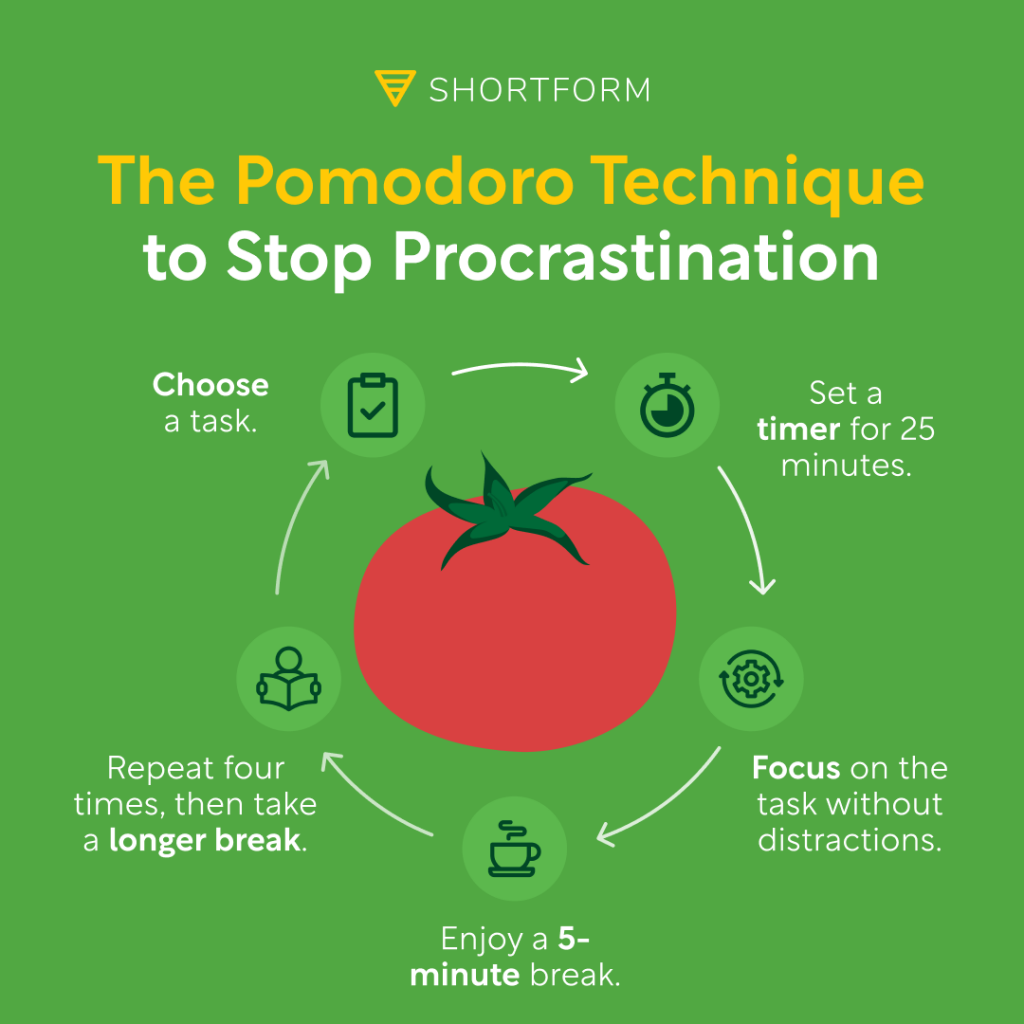

This article gives you a glimpse of what you can learn with Shortform. Shortform has the world’s best guides to 1000+ nonfiction books, plus other resources to help you accelerate your learning.
Want to learn faster and get smarter? Sign up for a free trial here .
What is the Pomodoro technique? How do you use the technique, and what are the benefits?
The Pomodoro technique is a time management method that breaks work into short intervals of work and breaks. The method is designed to boost productivity and efficiency.
To understand the method better, keep reading for an in-depth explanation and a Pomodoro technique infographic.
The Pomodoro Technique—Explained With an Infographic
The Pomodoro technique was developed by Francesco Cirillo, who used a kitchen timer that was styled to look like a tomato. (The word “Pomodoro” is Italian for “tomato.”) This technique naturally shifts your focus from the product (finishing an assignment) to the process (working for 25 minutes), and the length of time is attainable. You can focus for 25 minutes.
The below infographic on the Pomodoro technique gives you a visual explanation of how the technique works.

The Pomodoro Technique is a way of reserving chunks of time for uninterrupted (and therefore productive) work. It works like this:
- Start a timer for 25 minutes. Focus on your work for 25 minutes and don’t let anyone interrupt you. When the timer goes off, stop working.
- Address any interruptions you ignored during your 25 minutes.
- Take a five-minute break.
- Do another 25 minutes of work.
- After four 25-minute sets, take a half-hour break.
Pomodoro Technique Benefits
Completing each 25-minute session gives you a sense of accomplishment, which acts as a reward, helping to make your study sessions more habitual. The breaks you take between sessions also allow you to reward yourself. Vary the length of your breaks from five minutes to half an hour or more, depending on how urgently you need to finish your work.
Another benefit of the Pomodoro technique is that timing yourself creates a mild sense of stress, and learning something under mild stress enhances your ability to perform it under stress. (This principle has been widely used in coaching, not only in athletics but also in technical disciplines like computer programming.)

Want to fast-track your learning? With Shortform, you’ll gain insights you won't find anywhere else .
Here's what you’ll get when you sign up for Shortform :
- Complicated ideas explained in simple and concise ways
- Smart analysis that connects what you’re reading to other key concepts
- Writing with zero fluff because we know how important your time is






